All about Siamese cats
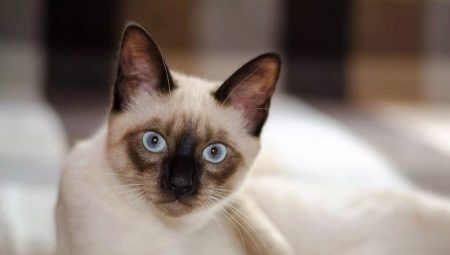
The Siamese cat is one of the recognizable breeds with a characteristic color and body structure. They are very intelligent and active animals with the makings of a brave fighter and an undeniable leader. The Siamese cat is capricious and proud, but if she becomes attached to her master, then her love will be unlimited, and her devotion will be eternal. Siamese are long-livers - with good and proper care, these cats can live up to 25 years, although there are cases of their longer life.

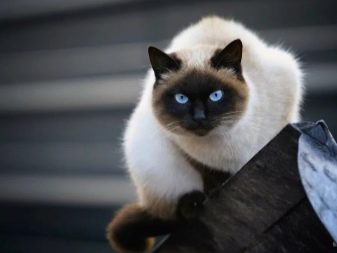
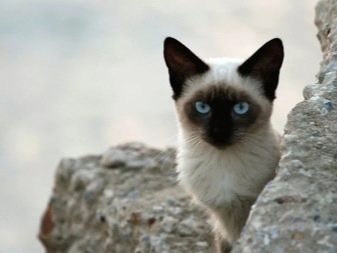

Origin story
Many versions about the origin of the Siamese cat agree that its homeland is Thailand, which in ancient times was called Siam. The Siamese cat at all times was so magnificent that it was called the "moon diamond". The animal was credited with the ability to contact the other world, and only religious servants and members of the imperial family were allowed to contain such a guide to other worlds.
The valuable breed of cats was under the legislative protection of the state and it was strictly forbidden to take animals out of the country. However, there is information that in 1884 the ruling monarch of Thailand made an unprecedented gift to the English ambassador - these were Siamese kittens. Later, after some time, the ban on the export of cats from the country was completely canceled.
Once in the UK, the Siamese did not meet with universal recognition due to the fact that they were unlike their feline counterparts. The action took place during the reign of Queen Victoria, who fell in love with these unusual cats. Thanks to her, the fashion for Siamese cats appeared, as a result of which they quickly became popular among noble persons and breeders.
The breed began to actively spread, it was shown at special exhibitions, and the fans of the Siamese became more and more.
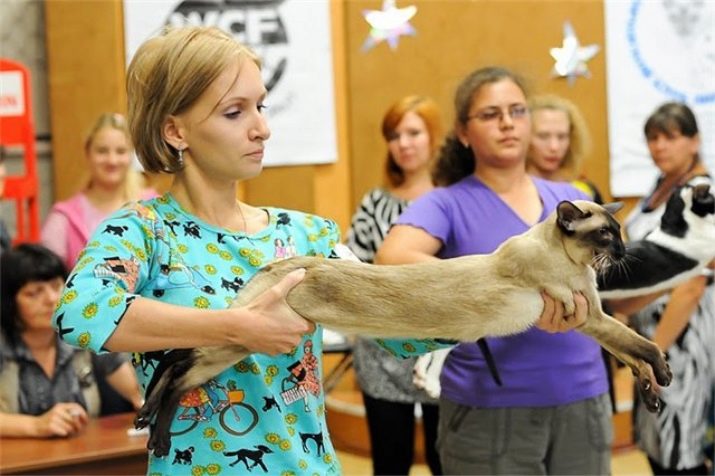
Soon, the Siamese cat began to explore the territories of the entire globe. First, it spread throughout Europe, then came to America. Siamese cats were first brought to the USSR by Sergei Obraztsov in 1954. These were two females with not the best properties of the breed. Cats of unusual color caused a stir and to obtain offspring they were crossed with ordinary cats. The kittens turned out to be of a mixed color and a rather aggressive disposition.
Failure did not stop the Soviet breeders. Siamese began to cross not only with other cat breeds, but also among themselves within the same litter. As a result, many sick and even dead kittens were born, and the purity of the unique breed was lost. The Siamese were helped by the fact that in the mid-80s, new purebred representatives of this species were imported and their breeding was already carried out in compliance with the preservation of the purity of the breed. Today, on the territory of our country, purebred Siamese cats fully comply with all international standards.
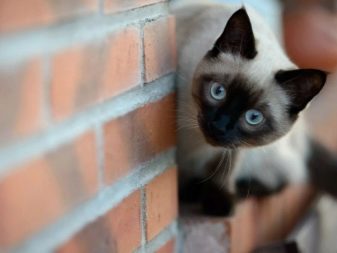
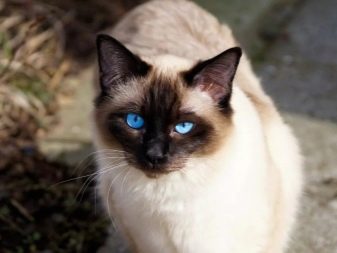
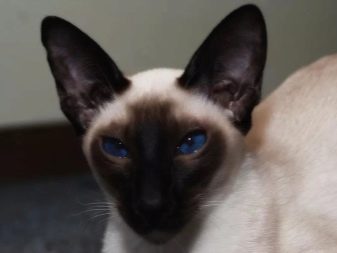
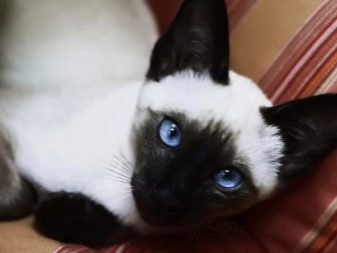
Description
The purebred Siamese cat is petite and well built. You can recognize it by its characteristic color. Today there are several types of Siamese breed, but each of them will definitely have points in color - this is the name of dark color spots located on the paws, tail, ears and muzzle. The points are formed due to the increased production of pigment in those parts of the cat's body where its temperature is coldest.
Surprisingly, scientists have discovered the property of this breed to change its color in the event that the animal becomes cold.



Newborn kittens have a light color without pronounced points. This is because the babies were warm in the mother's womb, and points are formed only when there is a difference in body temperature in certain areas. Over time, babies acquire a traditional color, which only happens by the age of 10 months. In a warm room, kittens will have a light chocolate shade, and the warmer it is in the house, the lighter their shade will be. Kittens born outdoors or in a cool room will have bright black-brown points.
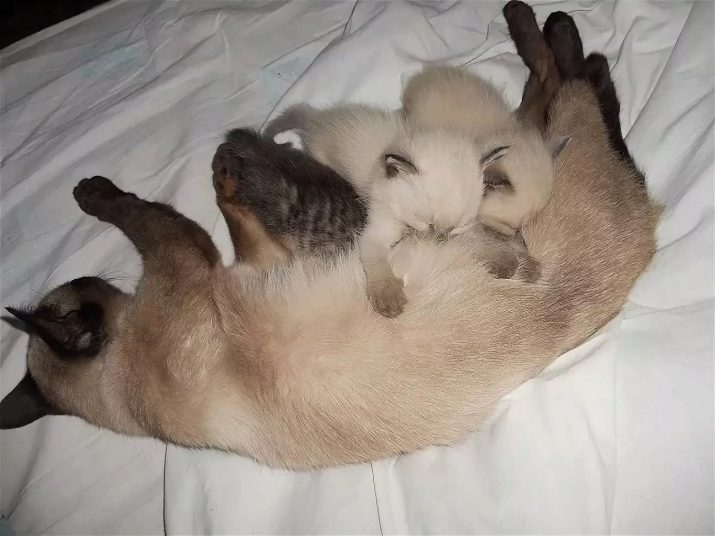
Siamese cats have a muscular body, the structure of which is anatomically proportional. Due to his correct build, the thoroughbred Siamese looks regal and graceful. His paws are thin and elongated, and the forelimbs are somewhat shorter than the hind ones. The weight of an adult cat does not exceed 4.5-6 kg. Statistically, cats reach about 67-69 cm in length from the nose to the tip of the tail. The tail is up to 27-28 cm long, it is thin and has a pointed shape. The height of the cat in the area of the shoulder blades does not exceed 28-30 cm. The hair of the animal is short and thick, tight to the body, and the undercoat of this breed is completely absent.
The head and neck of the Siamese are elongated, the skull has an almost flat structure. The muzzle is narrowed, and the nose is clearly defined, elongated and straight. The frontal region has a flat structure with small superciliary arches, the lower jaw is short and pronounced. A feature of the breed is that from the extreme point of the nose and between the tips of the auricles, you can visually draw a triangle with sides equal in length. The ears of the cat are large and developed, their shape resembles a triangle, and the tips of the ears are pointed.




All Siamese cats and cats are distinguished from other cat breeds by their beautiful cut and eye color. The almond-shaped and medium-sized eyes make this cat beautiful and unforgettable. According to the breed standard, the color of the cat's eyes should be bright blue shades. A regularity has been established, according to which the darker and richer the shades of the cat's coat, the brighter her eye color. The eyes are located at an angle of 45 degrees relative to the nose - this gives the Siamese a mysterious and at the same time mystical look.
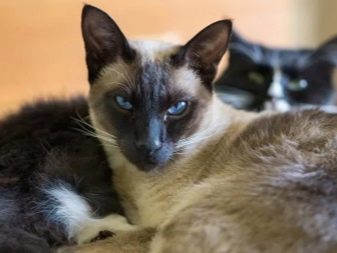
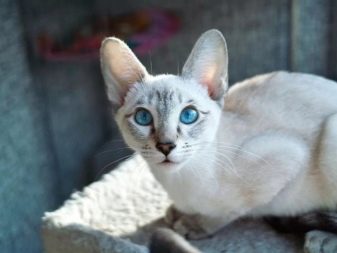
Character
By their nature, Thai cats are peculiar - even at their most tender age, you already have a personality in front of you. Not everyone succeeds in establishing contact and understanding with the Siamese. And it's not about the stubbornness or selfishness of the pet. This breed is very independent, differs in that it chooses only one owner from the whole family, and at best ignores or tolerates the rest. In many ways, the surrounding environment will play a role in shaping the kitten's character - in a calm and benevolent atmosphere, the baby will never become an aggressor.
The kid loves care, attention and admiration, but absolutely cannot stand the competition. The Siamese will immediately declare war on a competitor and will never cede his territory. An exception may be the situation when a small kitten is brought home to an adult Siamese cat, in which case a friendship can develop between them.

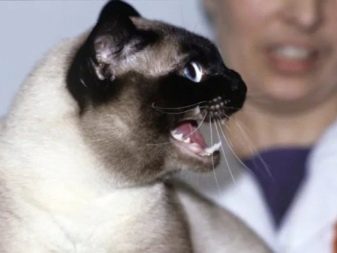
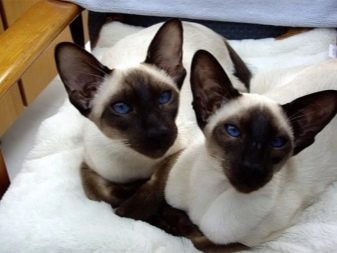

Attaching to the owner, Thais will demand constant attention from him because of their natural sociability. Siamese do not like to stay alone, the maximum, how long they can calmly wait for their master is 10-12 hours. Later, if the owner has not returned, the cat or cat begins to loudly resent. They have very good vocal skills, and their hoarse voice will be heard by all neighbors. The "concert" will continue until the owner comes and calms the pet. When you return after a long absence, it is very important to play with the animal, pet it, talk to it in a friendly manner.
To express their feelings and emotions, Thais use their voice, the range of which is very wide. However, in their environment, pets love peace and quiet - they cannot stand loud screams, swearing, and harsh sounds. In a nervous environment, the psyche of a Siamese will experience excessive overload and he may get sick. It has been proven that Siamese cats can react not only to the timbre of the voice, but also to catch a certain semantic load, especially if a person's speech is addressed to them.
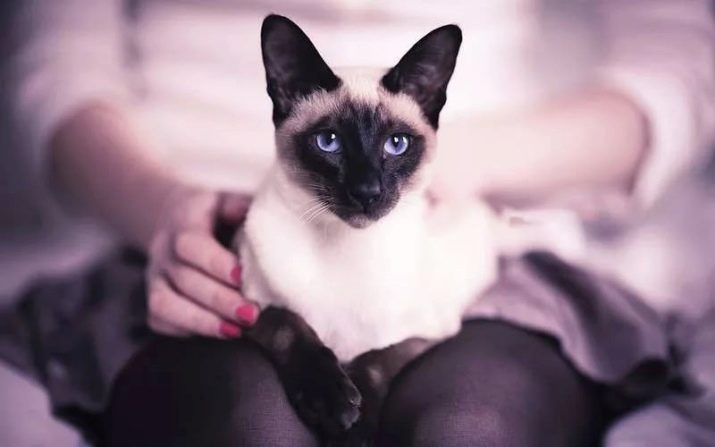
Siamese are curious and endowed with excellent intuition, they have an innate ability to quickly explore new territories and adapt to them. They remain playful and mobile, even as adults. Cats love active games with children, but only if the children treat them carefully. The Siamese do not like it when babies pull their tail and if this happens, the pet will immediately use its claws and teeth to protect itself. The Thai cat prefers to play with people she knows, she will be wary of strangers and will prefer to refrain from fun.
Often, cats of the Siamese breed show the instincts of natural hunters - this can be expressed either in the game, when literally everything that turns up and seems interesting to the animal is used for it, or it will be a real hunt for mice and rats, in which the Siamese excels very well. Thais are observant - they can easily learn to open doors, refrigerator, your purse, box. It is not recommended to scold and punish these cats. The Siamese will remember his insult for a long time and may begin to take revenge on the offender.

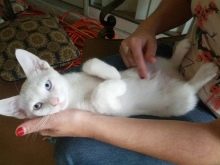

Views
The following varieties belong to the classic oriental-oriental group of the Siamese breed.
- Siamese view - a short-haired cat with a narrow wedge-shaped head, pointed ears and blue eyes. The body is thin, proportional, legs and tail are long. These cats are very beautiful and are one of the favorite breeds of many breeders. They have a combination of white and cream coats with dark brown points.
- Thai view - is considered the standard of the original breed that existed in Thailand. They differ from the Siamese species in that all lines and proportions of the body have rounded and smoother lines.
- Oriental view - the body has the same structure and proportions as the Siamese species, but with the difference that the color of the cats is uniform gray or black, sometimes spots may be present, but this species has no points in color.This species was introduced along with the Siamese, but did not delight the breeders and was not so widespread.
- Mekong Bobtail - the color and structure resembles the Thai species, but in bobtails, the tail looks like a stump, consisting of several vertebrae.

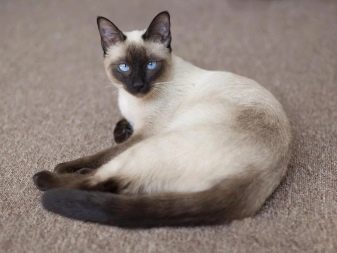
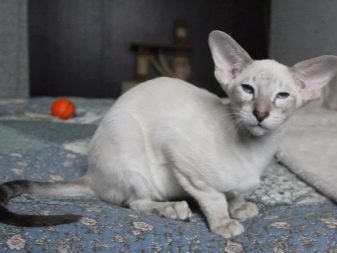
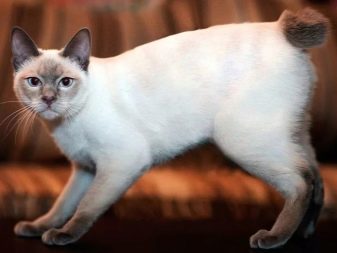
In modern breeding species of Siamese cats, the characteristic of colors can vary.
- Brown seal point - the general color of the cat's body is light cream, and the points have a dark chocolate shade of color.
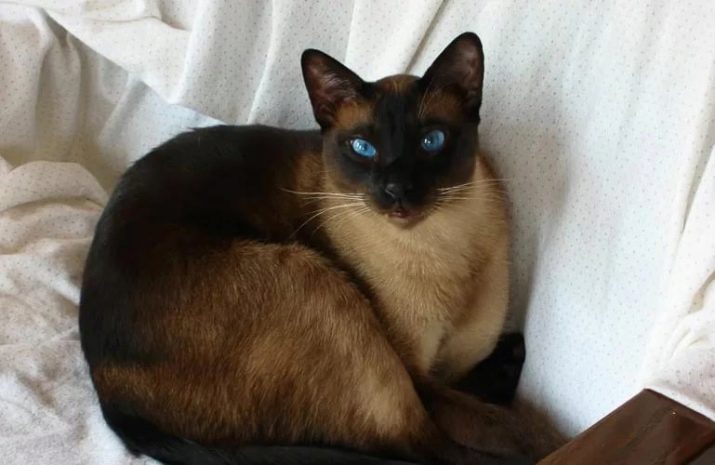
- Blue blue point - the main color of the coat is pure white, while on the paws, tail, ears, nose and muzzle, the white coat has a grayish-blue tone.
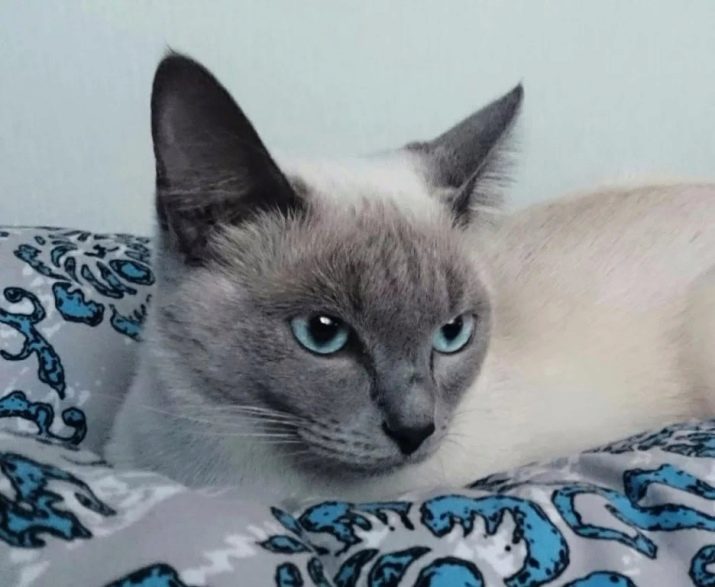
- Apricot red point - the main color is white. The points have a reddish or apricot hue.
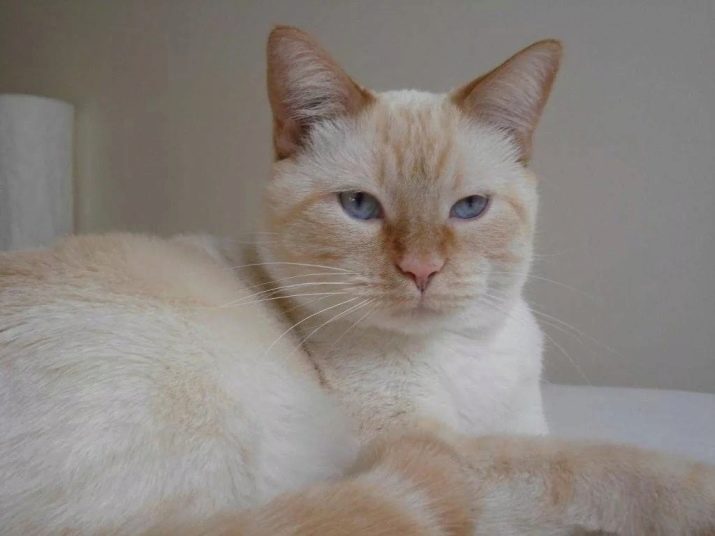
- Light cream caramel point - the body color of the cat has a pale cream color, while the points are painted in a pinkish caramel tone.
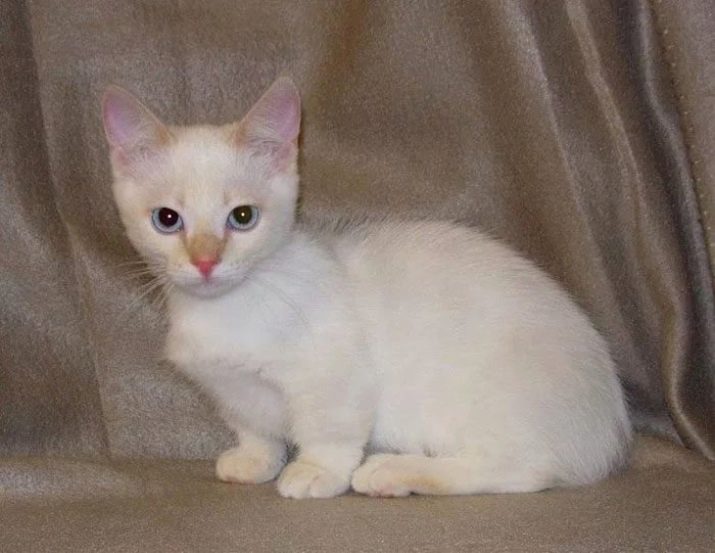
- Dark chocolate point - the general color of the coat can be pale cream or beige, and the points are black or dark chocolate.
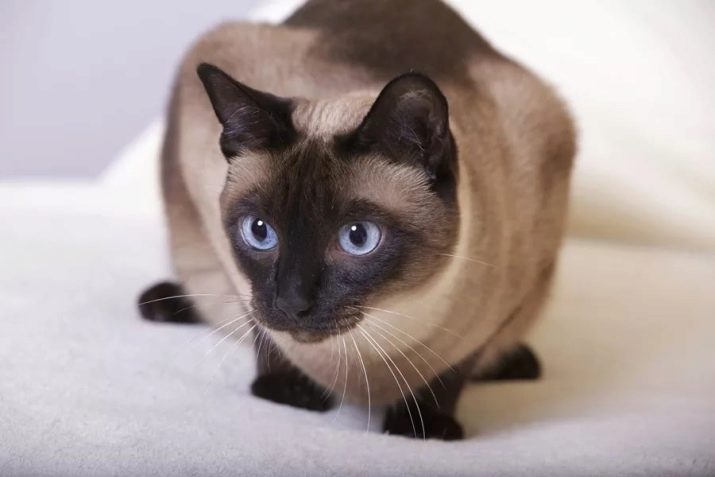
- Pink lilac point - the white hair of the cat's body is very beautifully combined with the points of a grayish-pink hue.
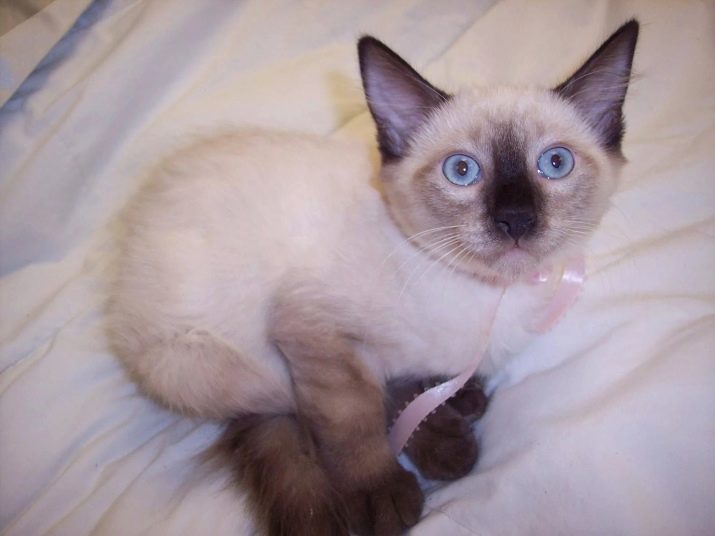
- Ivory cinnamon point - the body of the Siamese is covered with ivory hair, while the points have a pale pinkish brown tone.
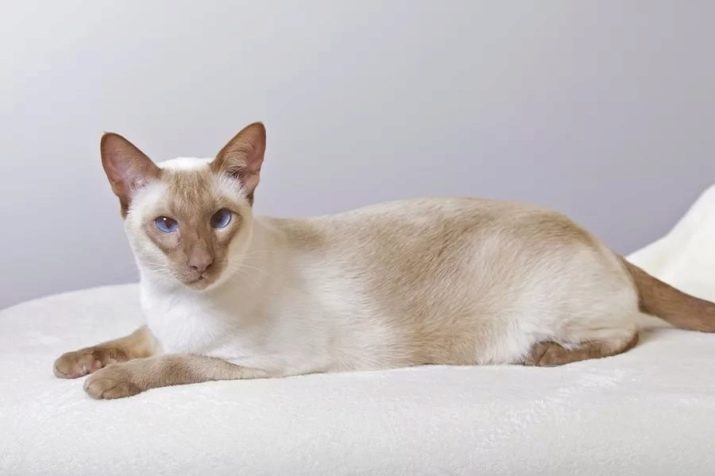
- Tortoiseshell tori point - the unusual color is that the points on the paws, muzzle, ears and tail have, in addition to the main color, blotches of blue, gray, red or cream shades.
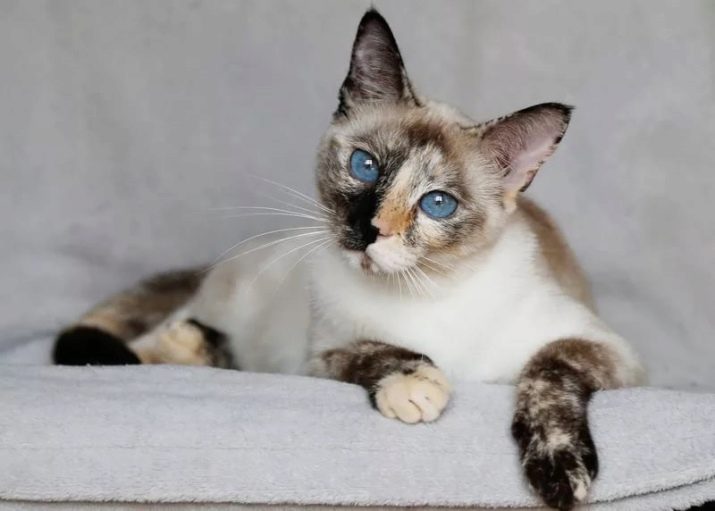
- Tabi point - if the color of the body of the cat is uniform, its points have pronounced stripes. The coat is colored slightly darker than the main color of the point.
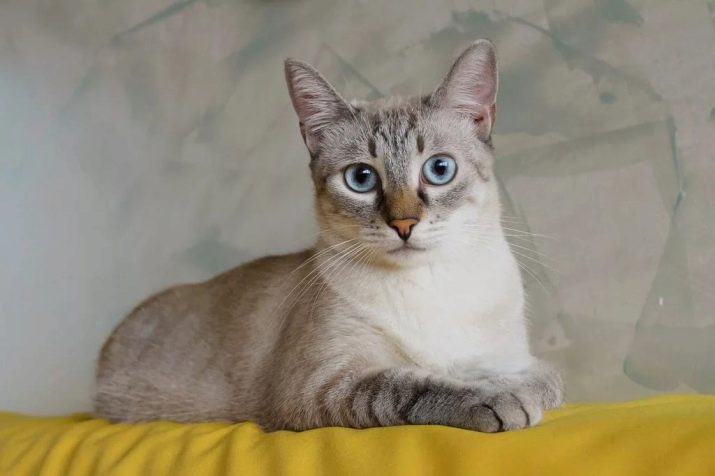
The more unusual you find in the coloration of a Siamese cat, the further it is removed from its purebred standard. Of course, such colors are the work of many years of work of breeders.
How to feed?
Siamese cats are picky about food and don't eat what they don't like. A small kitten can be accustomed to certain types of food, but if you have taken a grown cat into the house, be prepared for the fact that she has already formed taste preferences and you will not be able to change them. The diet of the Siamese cat consists only of balanced dry food, or it can be natural products that can be combined with dry food.
Specialty foods are believed to be the preferred feed for your pet as they are rich in vitamins and minerals. Siamese breeders consider the highest quality feeds to be products, the quality of which is declared to be at least premium.

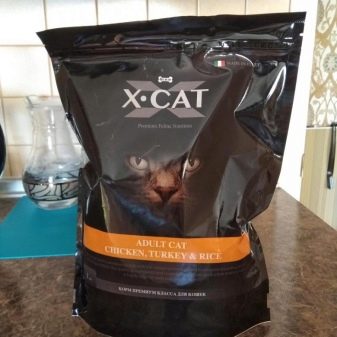
If you decide to feed your pet natural products, try to coordinate the diet with your veterinarian. The menu may include:
- fresh beef or veal;
- turkey or chicken (without skin and bones);
- dietary rabbit meat;
- red fish and fish of marine low-fat varieties;
- beef liver or heart;
- buckwheat or pearl barley;
- natural vegetable oils;
- milk (for kittens) and fermented milk products (for adults);
- chicken eggs;
- natural greens, juicy grass.
Siamese owners question whether cats can be fed pork. Veterinarians say that it is possible, but the meat must first be frozen at low temperatures, and then subjected to heat treatment. Pork should be given without fat and in small quantities in the form of boiled pieces or broth.



To preserve the health of a cat, the following foods should be excluded from its diet:
- sugar and its substitutes;
- cocoa and chocolate;
- salt and hot spices;
- onion and garlic;
- pickles and vinegar;
- any smoked meats and canned foods;
- Palm oil;
- soybeans and legumes;
- fresh and dried sweet fruits;
- semolina and corn porridge;
- river fish, as well as salted or dried fish of any origin;
- mushrooms;
- any bones, skin and fat.
When feeding Siamese cats, do not overfeed them. Feeding should take place at the same hours, morning and evening.Two meals a day is enough for an animal, provided that it is balanced in the number of proteins, fats and carbohydrates. After 7 years of age, the pet needs to be transferred to 3 meals a day.
Pregnant cats are fed 4 to 6 times a day, and small kittens need to eat at least 6-7 times daily.
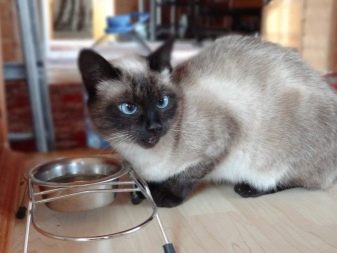
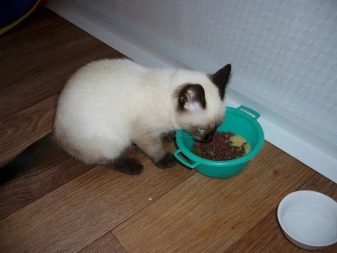
How to educate?
It is necessary to form useful skills in a Siamese cat at an early age, and what you can teach it to, the cat will keep for life, since adults rarely change their habits.
First of all, toilet train your kitten. To do this, you need to stock up on a plastic tray with a special filler, which can be bought at any pet store. The cat litter is placed in a secluded place where the pet will feel calm.
As soon as you bring the kitten into the house, take it to the litter box and allow time for the pet to study it.... After that, when you notice that the baby has started looking for a place to satisfy his natural needs, take him back to the litter box.
If the kitten has coped with its problem in the tray, the baby should be stroked and praised. So gradually he will develop a reflex, which you will positively reinforce.
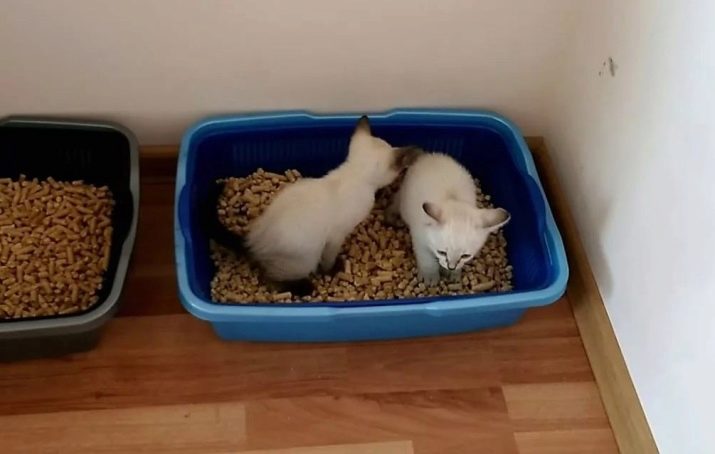
If the baby is playing too much or for other reasons does not want to do his business in the tray, you do not need to scold and punish him. Gently take the baby by the withers area and bring it to the tray, where in an affectionate voice you need to persuade the kitten to make a puddle where it is required.
After a positive result, the baby should always be praised. If a Siamese has done his business outside the tray, poking his nose into a puddle is not worth it - in doing so, you do not overdo it, but you can ruin the relationship forever. The litter box must be regularly rinsed and disinfected with hot water and vinegar, while chemicals with strong odors, and even more so with chlorine, cannot be used.
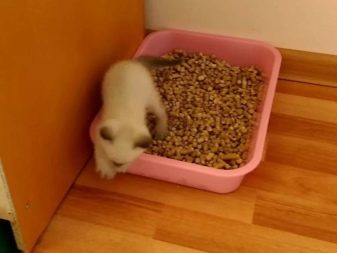
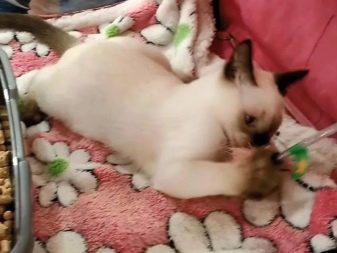
An equally important point is finding a comfortable place for your pet to sleep and rest. When choosing it, one must remember that the sleeping place will also be a point of view of the surrounding space for the kitten. Often cats choose a place for themselves on a small hill from the floor level, and also the place to sleep should be as hidden as possible from people passing by and their attention.
It is a good idea to arrange a sleeping place for your pet in a shallow but wide enough wicker basket. Inside you need to put a soft mattress or thick fabric. Pet shops now have a huge selection of special houses designed for cats, in which pets feel comfortable and protected.
If a kitten refuses to sleep in the secluded place provided to him and tries to get into bed with a person, this should not be allowed. The kid should be accustomed to his sleeping corner from the first days of his appearance in your house. Often, cats like to choose their own place to rest, and if the pet does not want to recognize any other place, you will have to put his basket where he chose. Only in this case will he be able to sleep peacefully and feel safe.

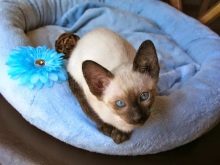

Siamese cats love the attention and care of a person, but it also happens that the pet begins to abuse your friendliness - the cat begins to engage in extortion. He can ask for food from the table and at the same time meow loudly. Such behavior cannot be reinforced, otherwise, having matured, the pet will demand whatever it wants, and at the same time scream very loudly at the top of its voice.
To discourage such moments, breeders advise feeding the Siamese when you are about to leave your apartment. So you can get enough sleep in the morning, and your pet will survive your absence much easier, because with your departure he will have positive emotions in the process of eating. Remember that begging a Siamese should never and under no circumstances be encouraged - do not give him pieces from the table, do not share food from your hands.
It is important to train the kitten to touch your hands so that it does not scratch. For this, the baby needs to be picked up several times a day and gently stroked over the coat, without making any sudden movements at this time. When stroking with a kitten, you need to talk calmly and friendly. Over time, he will get used to contact with a person and will not bite or scratch while defending himself.

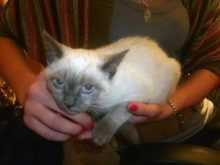

The kid must be taught to sharpen growing claws in a specially designated place for this - a cat scratching post. Until the kitten gets used to the fact that claws can only be released on a scratching post, the furniture is covered with dense covers. To train the Siamese, observe where he likes to sharpen his claws, and it is there that you install a scratching post - if the kid understands and does everything right, do not forget to praise him for this.
Care rules
Taking care of Siamese cats is easy, but you need to know and follow some important points.
- The optimum temperature for an animal is 25-28 degrees Celsius. This range is needed in order to maintain the color of the pet, because in cool conditions, its coat will darken. You don't need to humidify the air, but you need to protect the cat from drafts. During the off-season it is good to have a special warm house or rug where the Siamese can keep warm.
- Siamese do not need to brush their fur, but if you brush over the back and tummy of your cat, he will love it. You can bathe your pet no more than once a month.
- The skin, ears, eye area, paws and tail - all need to be regularly examined for damage from diseases or blood-sucking parasites. If problems are found, it is necessary to seek veterinary help in a timely manner.
- Adult cats should regularly brush their teeth with a regular small toothbrush without using toothpaste. Your pet's oral cavity should be checked by a veterinarian once a year.
- Small kittens need to trim their nails, at this time they are still soft. Adult cats can grind their claws on the scratching post themselves.
- When walking on the street, especially in a city, the pet can be put on a leash with a harness - this will save him from fleeing in an unknown direction in case of fright.
- The ears and eyes of the pet should be regularly wiped with damp cotton swabs. If you notice discharge from the eyes, immediately contact your veterinarian, as this may be a signal of the onset of a serious illness.
- Periodically, the cat needs to be given anthelmintics as a prophylaxis for helminthiasis.
Siamese cats are by nature very clean, so the owner needs to make sure that the pet always has fresh water, a clean bowl for eating, in addition, the litter box must be tidied up daily and make sure that the pet's sleeping place is also kept clean.
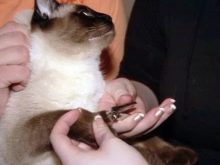
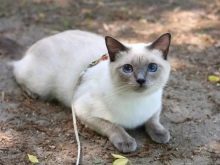
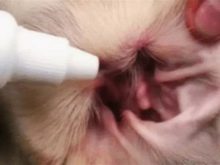
Health
Small kittens from 8 weeks of age begin to vaccinate against diseases, while the vaccination calendar is as follows:
- age 8-9 weeks - vaccination against plague and cat rhinitis;
- age 12 weeks - repeated vaccination against plague and rhinitis;
- age 14 weeks - rabies prevention;
- age 16 weeks - vaccination against leukemia and infectious peritonitis;
- age 19 weeks - repeated vaccination against leukemia and peritonitis.

Siamese cats, due to their genetic characteristics and the efforts of breeders, do not have diseases characteristic of exotic breeds. However, health problems can still happen, and veterinarians call the following the most common diseases of Siamese.
- Viral leukemia - the cause of the disease is a virus that, entering the bloodstream, reduces the number of leukocytes or erythrocytes, or leads to a progressive increase in the number of leukocytes. The disease is transmitted by contact with a sick animal, since the virus is found not only in the blood, but also in all body fluids.If the cat has good immunity or immunostimulating drugs were introduced to him on time, then the resistance to the virus will be successful. It may not manifest itself for many years and the cat, being its carrier, can infect its other fellows.
The best prevention in this case is timely vaccination.

- Rabies - a disease of viral etiology, which is transmitted by contact with the saliva of a sick animal. Getting into an open wound with a bite, the virus enters the brain, where it actively multiplies, causes inflammation and enters the area of the salivary glands. Under the influence of the disease, the behavior of the animal changes - the cat can become very aggressive or too affectionate, while it will have strong salivation. The sick animal will lose balance, and its muscles will begin to twitch noticeably. Treatment for this disease has not yet been found and the probability of death is 100%.
The only preventive measure is timely and regular vaccination.
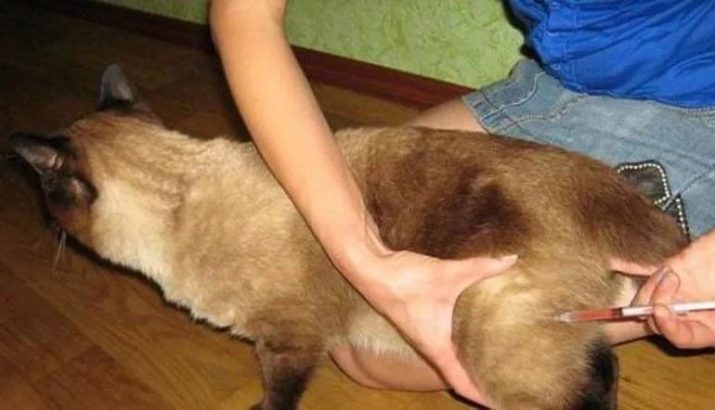
- Mixed infections - the cause of their occurrence is a virus transmitted by airborne droplets, while the animal's respiratory tract is affected. The disease is characterized by an increased body temperature, nasal discharge, sneezing, the presence of films in the oral cavity. The pet refuses to eat, is inactive, drowsy. With a purulent inflammatory process, breathing is difficult, shortness of breath and cough appear. Treatment of this condition can last for a long time, especially if the disease has turned into a purulent form, but the prognosis is usually favorable and the pet recovers.

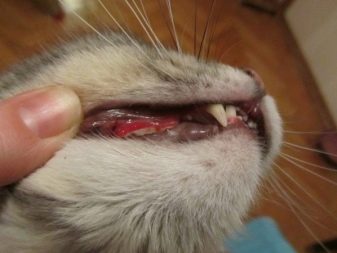
In order to prevent viral diseases, your pet needs to carry out all routine vaccinations. Also, try to avoid places where cats are present in large numbers - this could be exhibitions or just some kind of general area. Today, a number of combined vaccines are being produced against severe mixed infections, but they need to be made in time.
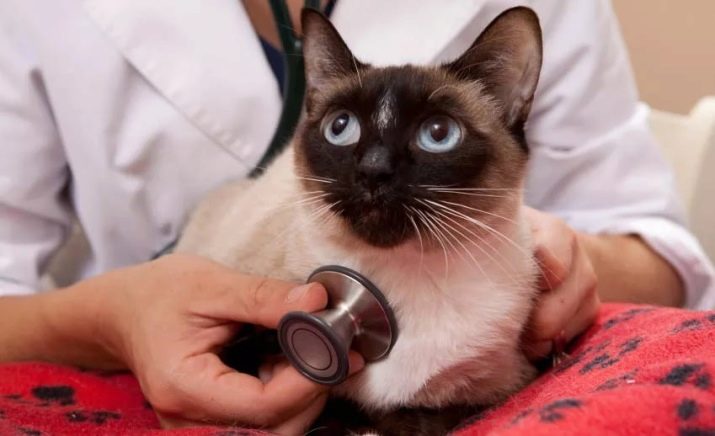
Interesting Facts
The life of the Siamese has always been full of secrets and incredible legends. In those distant times, when in Thailand cats lived at the court of the emperor, there is an opinion that mainly Buddhist monks were engaged in the cultivation of this breed. When the emperor died, people firmly believed that his soul passed into the body of one of his cats, therefore, for the rest of their lives, the pets that were previously under the emperor received lifelong maintenance and care from the monks.
Previously, many representatives of the Siamese breed could be observed squint and tail with a crease in the shape of the letter "L". Over time, breeders managed to correct these features, but a legend has survived, according to which the Siamese cat guarded the king's cup. She wrapped her tail around him and stared at him for so long that her tail twisted from tension and her eyes were defocused. Regarding the cat's tail, there is another legend that tells that the emperor's daughter loved to go swimming, and in order not to lose her rings in the water, she put them on the tail of a Siamese cat.
But one day the cat still lost one ring and the princess began to tie knots on the cat's tail so that the rings would not fall off - this is how it turned out to be a ring on the cat's tail.
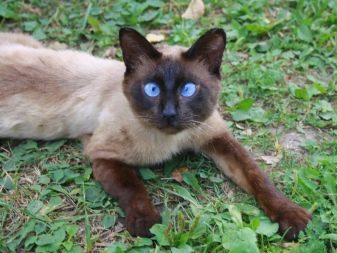
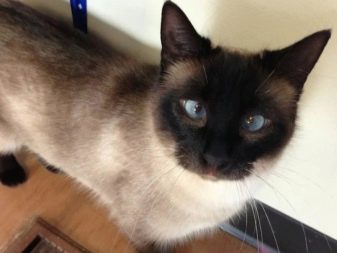
Once Siamese cats helped uncover a spy conspiracy - the case took place in the 60s of the last century at the Dutch embassy, which is located in Moscow. Embassy officials kept several Siamese cats there. One day, people were surprised to find the strange behavior of pets. The cats were nervous, scratching the walls, hissing and acting very suspicious. Embassy officials suspected that cats were reacting to sounds that humans could not hear. The building was urgently investigated and found about 30 hidden microphones that were mounted in the walls.
Representatives of the Siamese breed do not differ in any particular fertility. In a litter, a female usually brings 4 to 6 kittens.
However, in 1970, in the UK, a case was recorded when a cat lambed 19 kittens. In the process of giving birth, unfortunately, 4 kittens did not survive, but the rest of the babies felt great. This was the most unique case of feline fertility in the entire world.
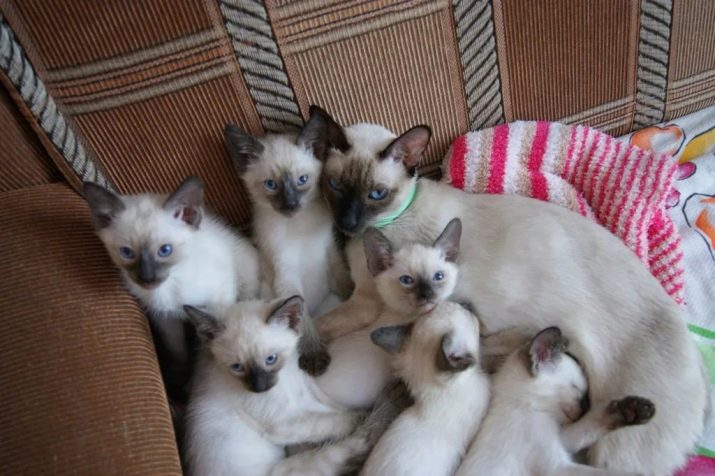
Owner reviews
People's reviews of Siamese cats are mixed. With someone, she immediately finds points of contact, but someone does not succeed in gaining the trust of this animal. There are a lot of the most incredible stories on the Internet where the Siamese breed is praised and scolded. If a cat has become attached to its owner with all its soul, then it will become a reliable and affectionate friend to a person for life.
However, these cats remember very well all the insults that are inflicted on them by intent or negligence, and then it happens that the cat begins to take revenge... She can shit on your pillow or your favorite shoes, throw objects off the shelves, pounce and bite. Cats know how to come up with revenge, and if the animal dislikes someone, then this is forever, there is no way back. Therefore, it is very important, starting from the age of a small kitten, to treat the Siamese with delicacy and affection, and then he will answer you with his love and devotion.
Many breeders note that the Siamese are not inferior to dogs in their devotion and during their life they become attached not to the place where they live, but to the person who loves them. The owners forgive their pets for all their petty tricks and pranks, especially if the cat has a kind and affectionate character.
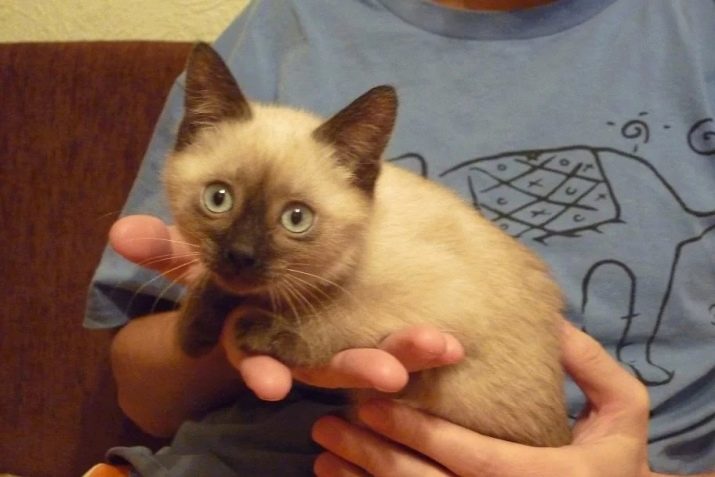
For the features of the Siamese cat breed, see the next video.





























I have a Siamese.
We have a Siamese, 12-13 years old, we adore the whole family, you can't find it more affectionate. True, it happens, it flirts, but then I myself overdo it. Faithful, open, gentle with children, a great hunter and protector from strangers. The best breed.